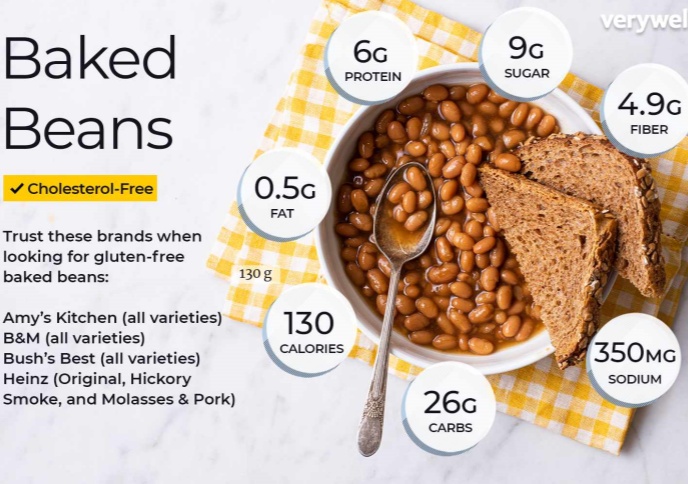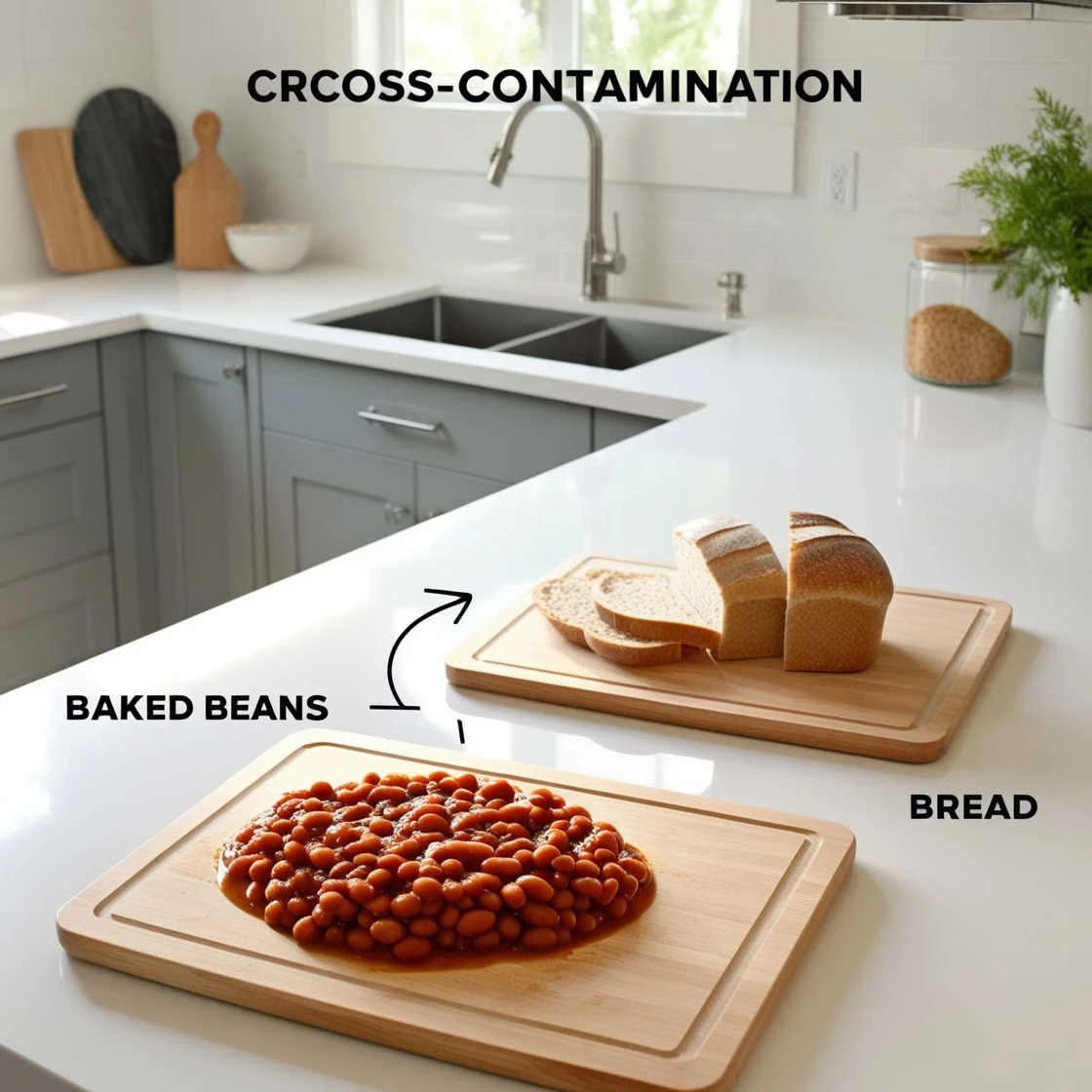If you’re following a gluten-free diet, you’ve probably found yourself questioning whether certain foods are truly safe to eat. Baked beans, for example, are a staple in many households, but are they really safe for someone with celiac disease or gluten sensitivity? In this article, we’ll explore the gluten-free mystery surrounding baked beans and help you make informed choices when it comes to including them in your diet.
Gluten, a protein found in wheat, barley, and rye, can trigger harmful reactions in people with celiac disease or gluten sensitivity. But what about baked beans? While baked beans are naturally gluten-free, there are several factors you need to consider when choosing a product. In particular, cross-contamination and added ingredients can introduce gluten into the mix. We’ll help you navigate the process and give you the tools to make safe choices.
Let’s dive in and unravel the mystery of whether baked beans are truly safe for a gluten-free diet.

Understanding Gluten and Gluten-Free Diets
Before we explore whether baked beans are gluten-free, it’s important to understand what gluten is and how it affects those with gluten sensitivities. Gluten is a protein found primarily in wheat, barley, and rye. For individuals with celiac disease, consuming gluten can trigger an immune response that damages the small intestine. Symptoms of this immune response range from mild discomfort, such as bloating and abdominal pain, to severe complications, such as malabsorption of nutrients.
A gluten-free diet is the primary treatment for those with celiac disease or gluten sensitivity. It involves eliminating all sources of gluten from the diet. For many, this means avoiding foods like bread, pasta, and cereals that contain gluten. However, gluten is also hidden in many processed foods, making it difficult for those with gluten sensitivities to navigate the grocery store.
For people on a gluten-free journey, it’s essential to learn how to read food labels, understand potential sources of gluten, and identify safe alternatives. With the right knowledge, it’s entirely possible to maintain a healthy, balanced gluten-free diet.

The Controversy Around Gluten in Baked Beans
Baked beans, often a beloved comfort food, have been a subject of debate in the gluten-free community. While baked beans themselves—primarily composed of beans, tomato sauce, and seasonings—are naturally gluten-free, there are some potential pitfalls that make it harder to confidently say that all baked beans are safe for a gluten-free diet.
One major issue is cross-contamination. Baked beans are often produced in facilities that also process wheat, barley, or rye-based products. This means that even if the ingredients in the beans themselves don’t contain gluten, traces of gluten from the manufacturing environment could make their way into the final product. For individuals with celiac disease, even trace amounts of gluten can cause a reaction.
Another concern is the additives used in some canned baked beans. To enhance flavor or improve texture, manufacturers may add thickeners, stabilizers, or sauces that contain gluten. Common culprits include wheat flour or barley-based malt. This makes it essential to scrutinize the ingredient list to ensure no gluten-containing substances are included.
Gluten-Free Labeling and Regulations
As demand for gluten-free products grows, regulatory bodies have introduced specific labeling guidelines to help consumers make safe choices. In the United States, for example, the Food and Drug Administration (FDA) requires products labeled "gluten-free" to contain fewer than 20 parts per million (ppm) of gluten. The European Union follows similar guidelines, using the Codex Alimentarius standard to ensure that products meet the 20 ppm threshold for gluten-free claims.
However, while these regulations set standards for manufacturers, they do not eliminate the risk of cross-contamination during production. Just because a product claims to be gluten-free doesn’t necessarily mean it is 100% free of gluten. In some cases, even trace amounts of gluten can trigger symptoms in highly sensitive individuals. For this reason, people with celiac disease or non-celiac gluten sensitivity should read labels carefully and consider reaching out to manufacturers for more information about their production processes.
Are Baked Beans Naturally Gluten-Free?
The good news for those following a gluten-free diet is that baked beans, when prepared with basic ingredients, are naturally gluten-free. The main ingredients in most baked beans are beans, tomato sauce, and various seasonings. Beans, such as navy beans, are legumes and are inherently free of gluten. Similarly, tomato sauce and puree are gluten-free, as long as no gluten-containing ingredients are added during production.
The issue arises when manufacturers add ingredients like thickeners, preservatives, or flavorings to enhance the taste or texture of the beans. These added ingredients can sometimes contain gluten, so it’s essential to read the label and ensure that there are no gluten-containing substances.
Common Sources of Gluten Contamination in Baked Beans
Although baked beans are typically gluten-free, several factors during their production and packaging could lead to gluten contamination. Understanding where this contamination might occur can help you avoid potential issues.
Additives and Thickeners: Some canned baked beans contain ingredients like wheat flour, barley malt, or other gluten-based thickeners. These ingredients are used to achieve a thicker consistency or enhance flavor, but they can introduce gluten into an otherwise gluten-free product. Always check the ingredient list for these potential sources of gluten.
Cross-Contamination in Manufacturing: Cross-contamination is one of the biggest concerns for those with gluten sensitivities. If a facility processes wheat-based products alongside baked beans, there’s a risk that trace amounts of gluten could make their way into the beans. Even if a product is labeled "gluten-free," cross-contamination could still occur during production, especially in shared equipment or facilities.
How to Safely Choose Baked Beans
Navigating the gluten-free landscape when it comes to baked beans doesn’t have to be difficult. By following a few simple tips, you can confidently choose safe, gluten-free baked beans.
Look for Gluten-Free Certification: One of the most reliable ways to ensure that a baked bean product is gluten-free is to look for gluten-free certification. Many reputable manufacturers will have their products certified by third-party organizations, ensuring that the product meets gluten-free standards and has been tested for gluten content.
Read the Label: If the product isn’t explicitly labeled as gluten-free, you’ll need to carefully read the ingredient list. Look for any mention of wheat, barley, or rye, as well as any ingredients derived from these grains, such as wheat flour or barley malt. Be extra cautious of thickeners, stabilizers, or sauces that could contain gluten.
Contact the Manufacturer: If you’re unsure about the safety of a product, don’t hesitate to contact the manufacturer. Many companies are happy to provide information about their ingredients and production processes. Asking about cross-contamination practices or the use of gluten-containing additives can give you added peace of mind.
Gluten-Free Alternatives to Baked Beans
If you find it difficult to find a reliable gluten-free baked bean option or simply want to explore other choices, there are several gluten-free alternatives to consider.
Other Legumes: Beans like kidney beans, black beans, and chickpeas are naturally gluten-free and can be used in many of the same dishes that call for baked beans. These legumes are rich in protein and fiber and can be used in a variety of savory recipes.
Lentils: Lentils are another excellent gluten-free option. They can be used in soups, stews, or curries and provide a hearty, filling alternative to baked beans.
Quinoa or Rice-Based Dishes: If you’re looking for something a bit different, quinoa and rice are both gluten-free grains that can be used as a base for casseroles or savory dishes. You can pair them with gluten-free vegetables, meats, and legumes to create a balanced, satisfying meal.
Conclusion: Enjoying Baked Beans on a Gluten-Free Diet
Baked beans can certainly be a part of a gluten-free diet, but it’s important to be diligent in selecting the right product. While the beans themselves are naturally gluten-free, added ingredients, additives, and cross-contamination during production can introduce gluten. By reading labels carefully, looking for gluten-free certification, and being aware of potential sources of contamination, you can confidently include baked beans in your meals.
Navigating the gluten-free world may require extra attention to detail, but with the right knowledge, you can continue to enjoy delicious, safe meals. Whether you're choosing certified gluten-free baked beans or exploring alternative legume-based dishes, there are plenty of ways to enjoy nutritious, gluten-free options without compromise.
